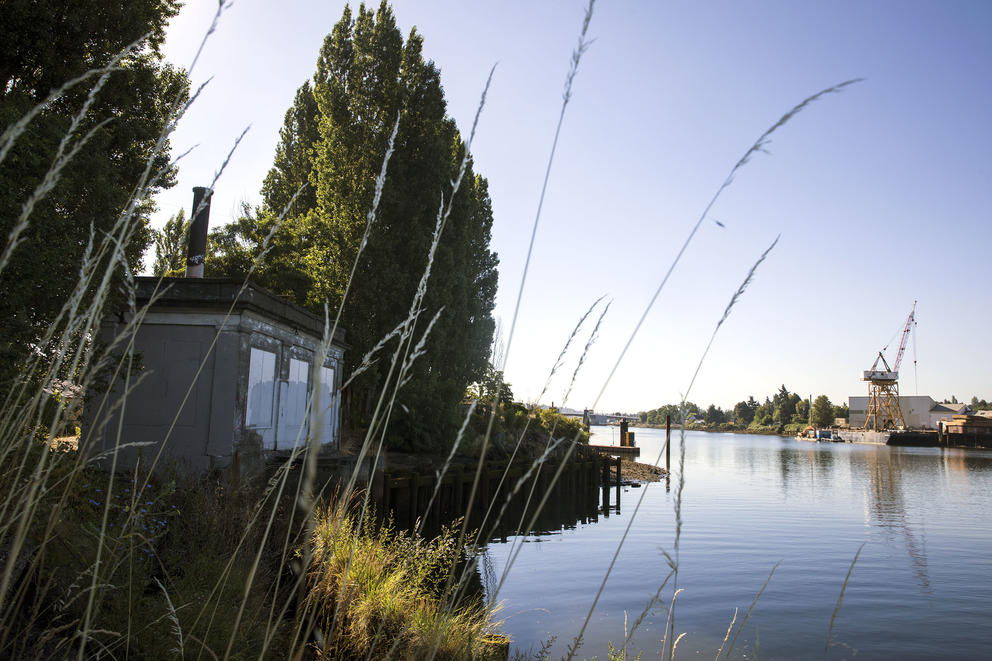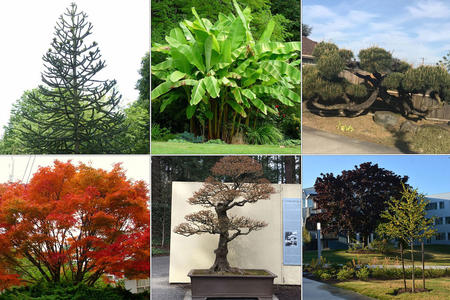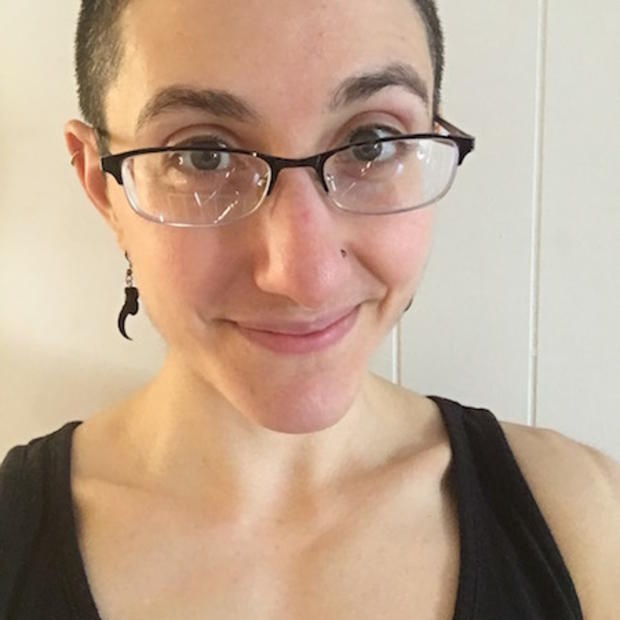South Seattle, with a heavy concentration of industry and a diverse population that, on average, earns less than residents in many other parts of the city, also features some of the sparsest tree canopy in Seattle, according to a city study. That matters to residents’ health, a growing body of evidence suggests.
On this summer afternoon, Schiffer and Scott are caring for baby trees in a Renton nursery. All the saplings have two things in common: They will soon go to South Seattle residents who lack greenery. And they are supposed to receive protection under a long-promised strengthening of Seattle’s decade-old tree ordinance.
But events of recent weeks cast doubt on whether a stronger ordinance will even be proposed, much less passed.
That prospect angers members of the city’s government’s advisory Urban Forestry Commission.
“This has been being worked on for 10 years,” said Steve Zemke, a commission member. “It's not something new.”
More than 4,400 people have signed an online petition urging the city to adopt a stronger ordinance, and a campaign on social media seeks the attention of Mayor Jenny Durkan.
The ordinance was supposed to have been toughened years ago. Former City Council Member Richard Conlin took up the cause in 2010, the year after a weak “interim” ordinance was adopted with a promise that stronger tree protections would follow. But Conlin was voted out of office before the beefed-up law could pass.
As Seattle became the fastest-growing big city in America over the next eight years, the Urban Forestry Commission's efforts to improve tree protections saw no success — even as cranes reshaped the skyline of “The Emerald City” and trees toppled. Then last August, Rob Johnson, chairman of the Seattle City Council’s Planning, Land Use & Zoning Committee, who presided over much of that frenetic growth and was then facing a legal challenge to a city plan for widespread upzonings, drafted a revised ordinance — only to resign in April, before his term was up.
Tree advocates’ hopes rose the next month when Councilmember Sally Bagshaw said she was willing to give it another shot.

But now Bagshaw says her plans to move forward in August have been dashed. She says she is hoping to pull something off in December. If not then, Bagshaw won’t have another chance — she’s out of office as of Jan. 1.
Slowing down the process was the idea of aides to Durkan and City Attorney Pete Holmes, Bagshaw told the forestry commission earlier this month.
“I’ve got to get the mayor’s office to help me get on board,” Bagshaw told the commission. “… I need them to say, ‘This is critical; we are going to go forward.’ ”
But one reason to go slow, Bagshaw said, is “to make sure people whose voices have not been heard to date have an opportunity” to get involved.
That’s an important point, according to racial-equity advocates. For too long, they say, white-led environmental organizations have come into South Seattle communities of color with the assumption that they know better than the residents themselves what people there need.
“A lot of the discussion is kind of foundering on the fact that I think it ignores — for communities of color, certainly — it ignores the real concerns and needs of these communities with the lack of tree canopy in the city," said Sean Watts, an environmental consultant who formerly served as community engagement director at the Seattle Parks Foundation.
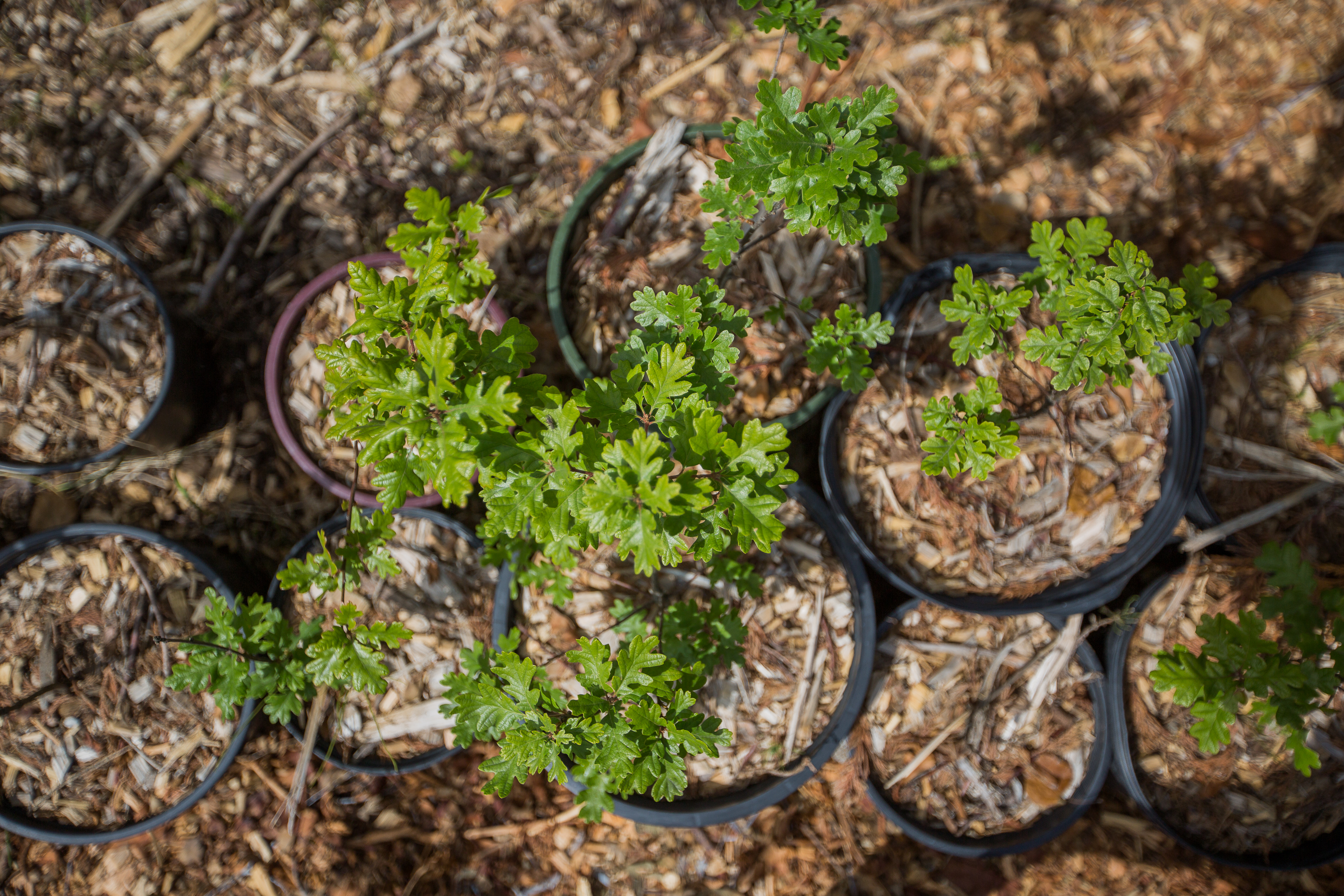
One factor: Anxiety among some people in these communities that a leafier neighborhood would appeal to wealthier people — meaning more and faster gentrification. It’s not that residents in these communities don’t want trees. They do, Watts and others say, but they want trees in a way that allows their voices to be heard — and avoids displacing them.
“I’ve heard things like ... ‘If you do build a nice park here, all of a sudden, our property values are going to go up, and our neighborhood will be more desirable to live in,” Watts said.
Rosario-Maria Medina, a Georgetown resident and local housing activist, awakens every day to the consequences of too few trees: she and her family must clean black soot off their windowsills.
As a community activist, the 29-year-old is frustrated when it comes to working with white-led environmental organizations. Echoing Watts, Medina said in a telephone interview that these organizations continue to come into underserved communities with the idea that they know better than the residents what the area needs.
And she, too, worries about gentrification.
But she sees the need for trees. Medina and her family have two pear trees, thanks to DIRT Corps’ giveaway program. She said she and her family are grateful for the trees, not only because they like pears, but because trees are usually fairly expensive.
Members of Medina’s family suffer from asthma and other respiratory problems, and they routinely have to see the doctor for as-yet-undiagnosed maladies that she believes stem from living in a virtually treeless area.
“They are going to the doctor repeatedly, and not getting an answer as to what they have,” Medina said. “They don’t know how to treat it, or combat any issues or symptoms they are having.”
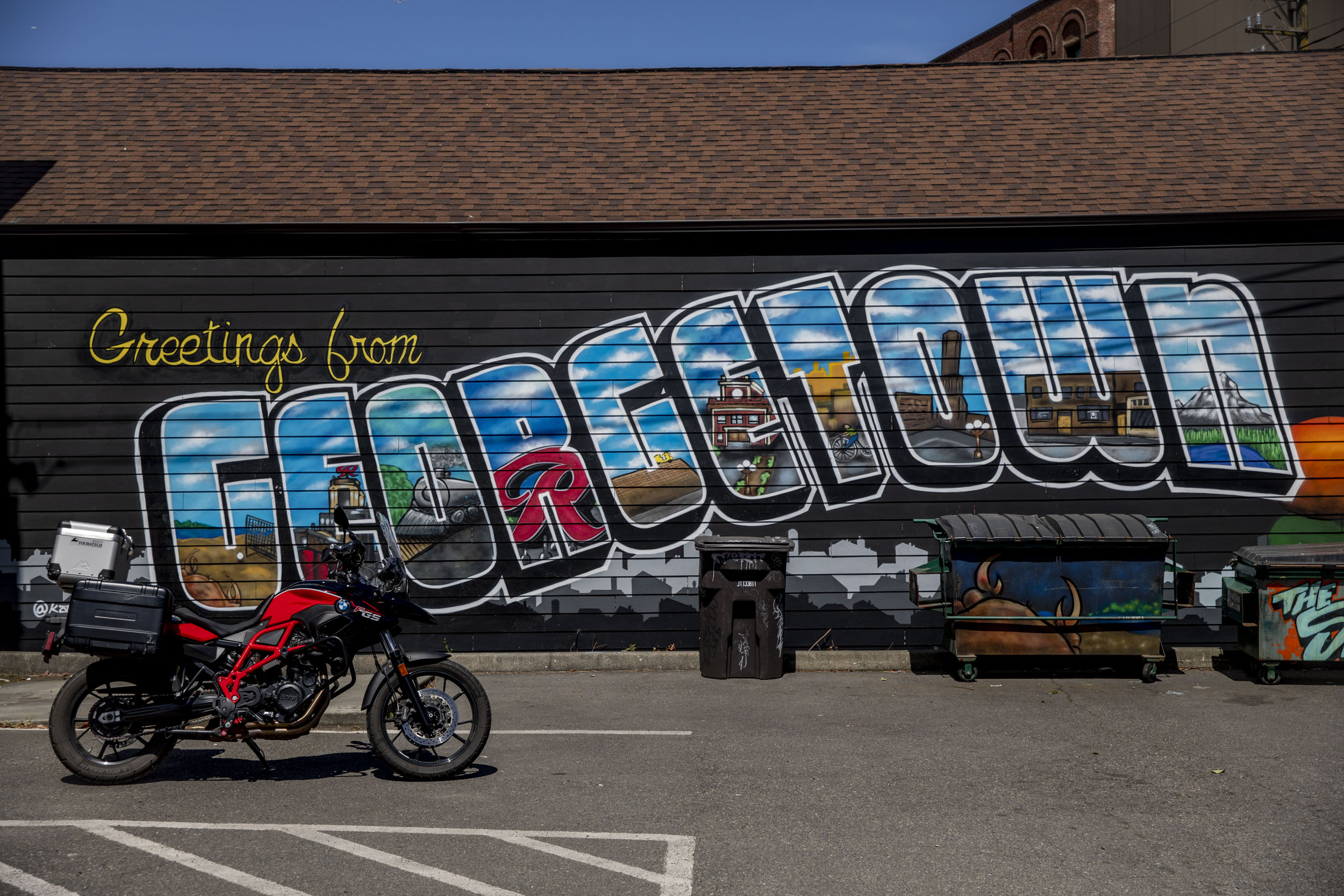
More trees means better health
Medina’s family’s health problems are not unusual for the area. People living in South Seattle are on average less healthy than residents of other parts of the city. Some of the best evidence of this emerged because South Seattle is bisected by the city’s biggest toxic waste site: the Duwamish River.
As part of the cleanup process, federal officials funded two local nonprofit groups to study health in the area. The 2013 report by the Duwamish River Cleanup Coalition and Just Health Action compared South Seattle’s 98108 ZIP code, encompassing South Park, Georgetown and Beacon Hill, to nine other Seattle ZIP codes. Researchers looked at 15 health-related factors, including the incidence of diabetes and asthma, air pollution and coverage of each ZIP code by parks and tree canopy.
The result: People in 98108 face a high degree of environmental health threats and are likely to live sicker and die younger than residents of other Seattle neighborhoods. On a finer scale, people in two neighborhoods that border the Duwamish River near Interstate 5, South Park and Georgetown, are more likely than other areas to be hospitalized for asthma and to die from heart disease. Their life expectancy is 73.3 years versus 81.5 for King County overall and a full 13 years short of how long people in relatively well-off Laurelhurst can expect to live, the report noted.
Then a 2016 city of Seattle study showed that Seattle’s tree canopy covers 28% of its land area. The goal is 30%, with an “aspirational” goal of 40% after that, according to a city council action in 2007.
The 2016 study showed wide variations in tree canopy coverage across the city, but concluded that in general “there is a statistically significant inverse relationship” between tree canopy and the percentage of residents who are people of color. The same holds for the percentage of people classified as low-wage earners.
Overall, the Duwamish area had the second-lowest amount of canopy coverage, 15%, with only downtown, at 10%, having less.
The Seattle Audubon Society used the city data to show that South Park’s coverage stands at 14.7%, and that the percentage of trees in Beacon Hill is in the 20% to 30% range, but Georgetown has just 5.1% coverage and the adjacent industrial district stands at only 3.9% canopy coverage. The 2016 city report states that the city is short of its goals in industrial areas, the downtown area and single-family and commercial and mixed-use developments.
Meanwhile, scientists globally have been increasingly cataloging how health of residents in a given neighborhood is correlated with the presence of trees and green space. While correlation is not causation, some of the findings include:
- Trees beside roads reduce indoor air pollution in nearby buildings by half.
- Greenery in low-income neighborhoods cuts residents’ stress levels.
- Trees in the inner city make residents less prone to mental fatigue and procrastination.
- The closer people live to green space, the less likely they are to be sick. The effect is strongest with children and people of lower socioeconomic status.
- A study released last week says urban planners need to consider the effect of trees and other greenery on mental health in an increasingly urbanized world.
What's not to like?
No matter what those studies say, anyone trying to increase the tree canopy in the city’s least-treed swaths will face a tricky path.
With Seattle’s ever-expanding tech industry and other factors driving the median home price in Seattle to nearly $800,000 — and prices soaring far higher in Seattle’s north end — the south end of Seattle looks increasingly attractive to homebuyers.
Seattle’s wealthier residents — who tend to be white English speakers — also want to live in a desirable location with trees and green space. Watts, the former Seattle Parks Foundation engagement director, said this leads to community resistance to revitalizing existing green spaces, regardless of how mediocre or unkempt they may appear.
“Just the fear of gentrification is enough to contribute to lack of action in open space and access to nature in these communities,” Watts said.
Case in point: The DIRT Corps’ Schiffer said his group got pushback for proposing to renovate Gateway Park North, also called Anarchy Point. At less than an acre, it is Georgetown’s only access to the Duwamish River. It’s owned by Seattle City Light, the Port of Seattle, Seattle’s Department of Transportation, the city’s Parks and Recreation Department and local business Recology Cleanscapes. Schiffer is only the latest in “a long line” of people who have tried to renovate the park, he said.
“There is a bunch of people who have been living in Georgetown for 20 years, a bunch of community groups … and so I have been talking with them, as I start working on the park,” Schiffer said in a phone interview. “I’m trying to … keep it for them by making the park still serve their needs.”
South Seattle has long been a center of industrial development. But those tech workers who may be looking south for their new bungalow soon? They are pouring into South Lake Union and Ballard, sections of Seattle that once housed lots of industry — industry displaced onto the Duwamish River Valley between 1990 and 2009. That was the conclusion of a 2015 report in the journal Sustainability by Western Washington University professors Troy Abel and Stacy Clauson and Michigan State University researcher Jonah White. The report looked at industrial development within Seattle, drawing on geographical analysis, pollution volume and toxic air emissions research, and Seattle’s land use policies and planning.
Abel said in a phone interview that the researchers found that after 1994, most industrial development moved south. And the south end’s greenery? That grew more sparse as industry moved in.
Given the history of redlining that historically helped shunt people of color to the south end, both Watts and Schiffer advocated that anyone trying to plant trees in South Seattle consider residents’ economic situation.
Because it is a lower-income area, South Seattle doesn't have the same kind of time and capacity as their northern neighbors, so it’s a problem when the city and other white-led environmental groups try to approach them in the exact same way, advocates for the community say.
When the city and these environmental groups see lower rates of meeting participation by the public, they may assume the residents are uninterested and uninvested in their communities, Watts said.
But this isn’t true, Watts said. Part of this perception happens because neither the city nor these groups meet the residents where they are, Watts said — and he doesn’t necessarily mean in the literal, physical sense. When he served at the Seattle Parks Foundation, Watts said he would try to advocate for “not necessarily more, but better” comment forums that take into account residents’ situations.
For instance, Watts said, the city should pay residents to attend community meetings if they take time off from their jobs to do so. Another enticement could be free child care during a public meeting, he said.
“That is such a privileged and entitled perspective to have — that you have this idea that you can have the luxury to just invest your time, because it’s for the betterment of the community, when people are faced with choosing between [attending a forum] and picking up their kids, or getting their kids to an after-school program, or putting food on the table,” Watts said.
Those who would improve conditions in south end neighborhoods need to go to community meetings and knock on doors before putting together plans, Watts said.
At DIRT Corps, where community programs include involving youth in tree planting, the programs aren’t run only in English. Schiffer said interpreters are on hand both at the tree giveaways and for the follow-ups the group does. Funding for these programs is running out, though, and Schiffer is trying to secure more by April 2020.
Ultimately, Schiffer said, gentrification is happening; and while greening the area may be making it more attractive for wealthy people and developers, the best way to ensure the existing community isn’t displaced is by making sure the community is involved.
DIRT Corps’ approach: “Giving them fruit trees that they can plant themselves in their yards, and following up with them, and giving them a watering bag, and giving them tree-planting instructions and resources — just really supportive, and in their community,” Schiffer said.
A path forward
Zemke, the Urban Forestry Commission member, said the way the commission wants to retool the current tree ordinance could aid canopy rebuilding efforts in South Seattle, which would help improve residents’ health. The forestry commission is proposing a change that would base tree replacement on the volume of trees removed, which takes tree diameter into account, not just the number of trees. The replacement could take place anywhere in the city, not just at the site where the trees were removed.
When asked how the city could ensure developers aren’t going to plant trees just in neighborhoods that don’t need them, or in places they later plan to develop, Zemke said that the law would require developers to look at where trees are needed. So, he said, places like the Duwamish River area and other heavily industrialized areas would take priority, in order to help reduce the negative health impacts.
Zemke also serves as chairman of a group called the Coalition for a Stronger Tree Ordinance. He said he was hopeful going into the forestry commission’s July 3 meeting with Bagshaw that progress was imminent. But it was not to be.
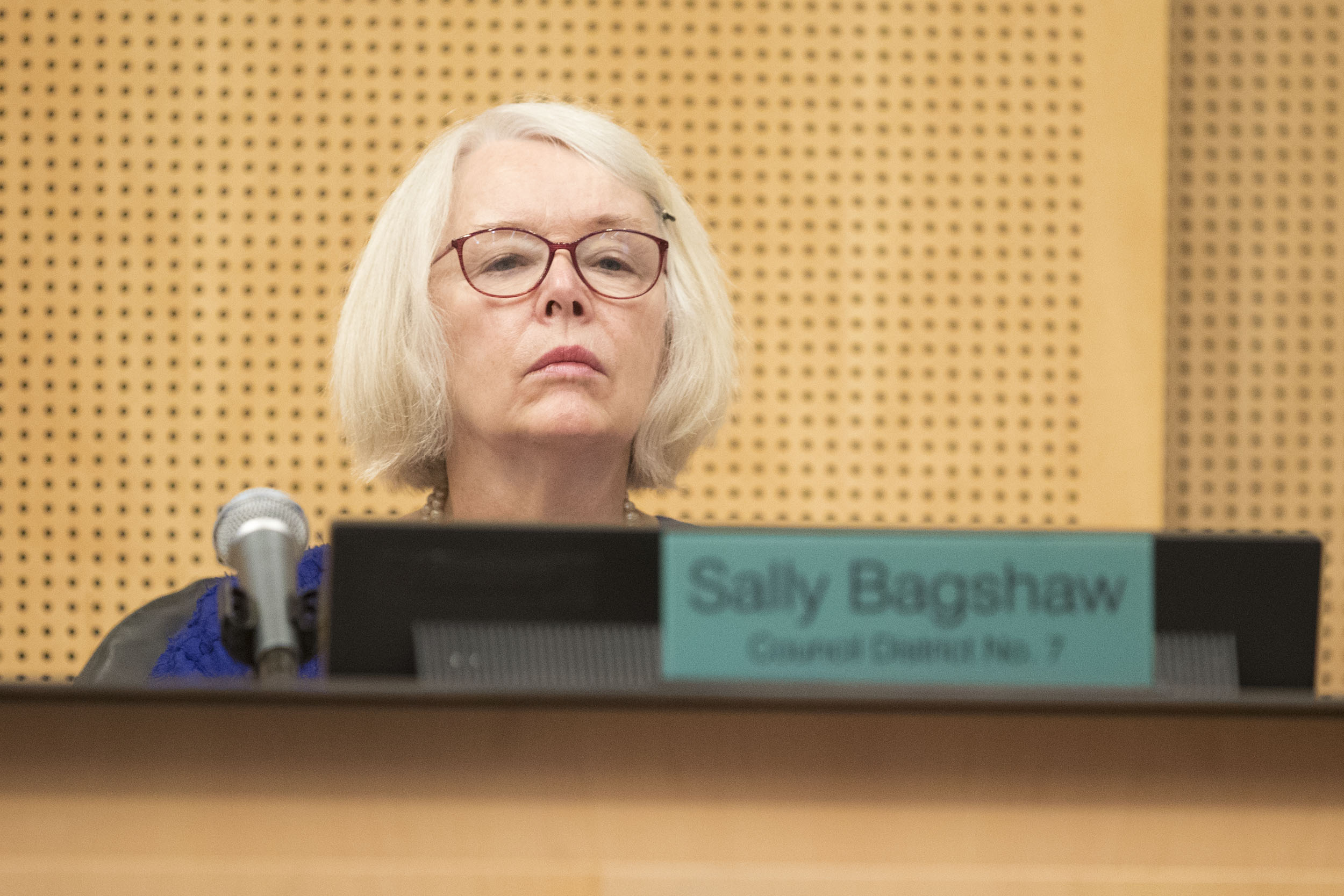
“[The meeting] basically started out where Sally Bagshaw was preparing the groundwork for [Councilmember] Lisa Herbold doing it next year, and we said, ‘No, no, that’s ridiculous,’ ” Zemke said.
Bagshaw did not return multiple phone calls seeking comment.
A spokesman for Holmes, the city attorney, wrote in an e-mail: "We are not at liberty to discuss what our legal advice is."
Durkan spokeswoman Kamaria Hightower answered InvestigateWest’s request for comment by writing in an email: “I appreciate you reaching out to us on this, unfortunately, we don’t have any update for you at this time, but I’m happy to circle back with you when there’s information to share on this topic. Thanks!"
CORRECTION: An earlier version of this story misspelled Rosario-Maria Medina's last name. The story has been corrected.
Robert McClure and Sally Deneen contributed to this report.
InvestigateWest is a Seattle-based nonprofit newsroom producing journalism for the common good.


